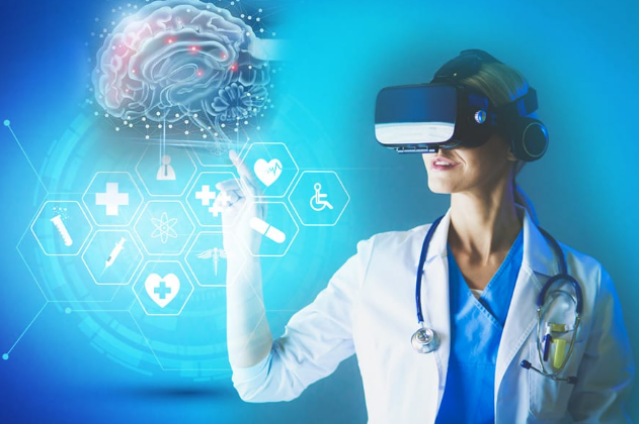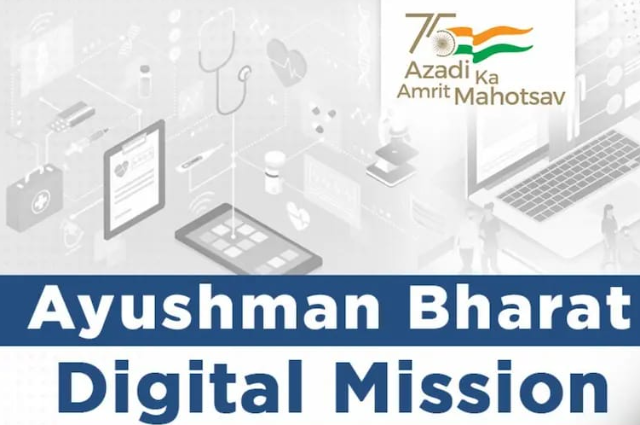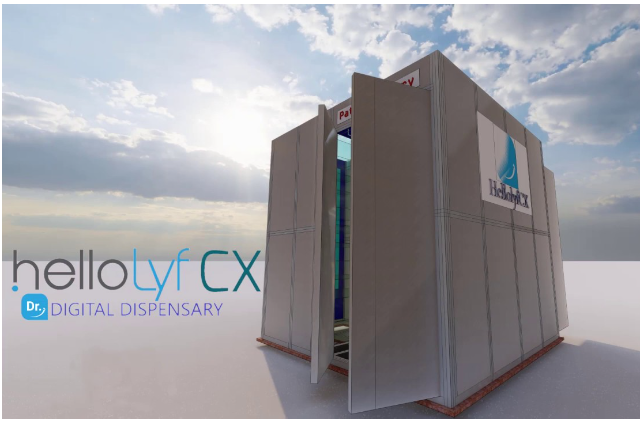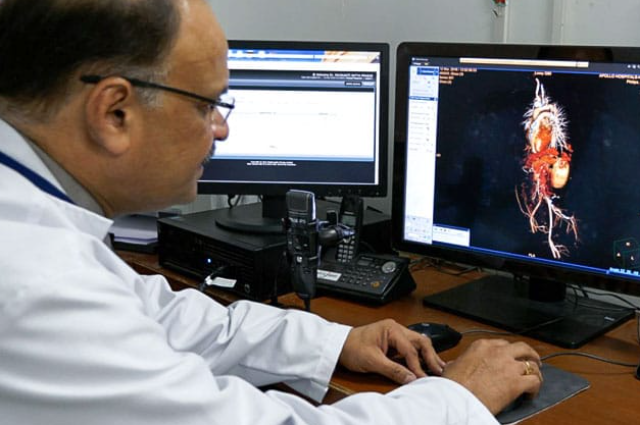We are celebrating “Azadi Ka Amrit Mahotsav”, it’s been 75 glorious years of our freedom. We made immense progress in the last 75 years, specifically in the last two decades. Just like that, we have seen a drastic change in the healthcare sector in the last two years. As the whole world is facing the deadliest pandemic man has ever seen, everyone tries their best to contribute in some or other way to mimic the effects of the pandemic. This pandemic changes the whole healthcare industry for good and gave us an opportunity to rethink our healthcare system. Governments around the world use the new technology in every way possible to make things easier for everyone. The Indian government also adapted new technologies in the pandemic and according to PwC India, India witnessed the highest increase in the use of artificial intelligence during COVID-19 time, around 73% of healthcare and pharma companies adopted AI during the year. This gave us an optimistic opportunity to use artificial intelligence specially in solving public healthcare sector challenges.
The Indian healthcare system is full of complexity and paradoxes. On one end it provides world-class healthcare facilities while on another it enables to provide basic primary healthcare facilities. India is becoming the most preferred tourism hub because of the availability of advanced facilities in low-cost, English-speaking personnel, ease of traveling, skilled doctors, and our traditional practices such as yoga and Ayurveda which promote overall health. At the same time, the public healthcare sector fails to provide three basic core factors of healthcare i.e., quality, accessibility, and cost. Not only in rural and remote areas but the urban public healthcare system also faces many problems such as shortage of efficient and trained manpower, lack of proper infrastructure, access, misdiagnosis, unmanageable patient load, communicable and non-communicable diseases, malnutrition, etc. The private sector in India is already utilizing Artificial intelligence to fulfill the needs of their customers. Now it’s time to fully unlock the potential of artificial intelligence and use it in the public sector for the well-being of every person regardless of where he or she belongs. Artificial intelligence is considered a new world fuel and it has immense potential in changing the way we perceive our health. So, let's first understand What is Artificial intelligence? Artificial Intelligence (AI) is defined as “the science and engineering of making intelligent machines, especially intelligent computer programs.” (McCarthy 2007). Artificial intelligence in healthcare is the use of machines to analyze and act on medical data, usually with the goal of predicting a particular outcome. Google CEO Sundar Pichai said in one of his speeches that “Healthcare is one the most important field AI is going to transform” and the reason for this is the high availability of medical data and the development of complex algorithms. So basically, AI is a branch of computer science concerned with building machines capable of performing tasks that typically require human intelligence. AI has different components and different sub-branches. Artificial intelligence is useful in various ways such as in analyzing unstructured data, telemedicine, aiding in accurate diagnosis, electronic health records, doing repetitive jobs, treatment design, virtual nurses, health monitoring, prediction of outbursts of communicable diseases, and many more to come. Our government is also optimistic about using artificial intelligence in the healthcare industry and many pilot projects, as well as successful projects, are already making healthcare easy and accessible to all.
Some prominent steps were taken by our government to implement artificial intelligence:
- Under the Digital India initiative in September 2021, prime minister Mr. Narendra Modi launched “the Ayushman Bharat Digital mission” to digitalize the public healthcare sector of India.
- Under the Digital India initiative, the Indian government set up an Artificial Intelligence task force, Four committees for AI under the Ministry of Electronics and Information Technology, International Center for Transformative Artificial Intelligence (ICTAI).
- NITI Aygo’s National Strategy for Artificial Intelligence: #AIFORAll will aim at enhancing and empowering human capabilities to address the challenges of access, affordability, shortage, and inconsistency of skilled expertise; effective implementation of AI initiatives to evolve scalable solutions for emerging economies; and endeavors to tackle some of the global challenges from AI’s perspective, be it application, research, development, technology, or responsible AI. #AIforAll will focus on harnessing collaborations and partnerships and aspires to ensure prosperity for all. Thus, #AIforAll means technology leadership in AI for achieving the greater good.” (NITI Aayog, Government of India 2018)
- INDIAai (National AI portal of India) is a joint venture by the Ministry of Electronics and Information Technology, the National E-Governance Division (NeGD), and the National Association of Software and Service Companies (NASSCOM). It was launched by the Indian Government on 1st June 2020. It has been set up with the vision to prepare the nation for an AI future.
All these steps taken by governments impart the potential of AI in near future. It shows that government is also interested in using AI in the public healthcare sector and wants to revolutionize it in the best way possible. Artificial intelligence is no more science fiction there are so many startups and government project that uses artificial intelligence at their best to bring about change in the healthcare field. Some real-time case studies are as follows:
Ayushman Bharat Digital Mission (ABDM):
ABDM aims to develop the backbone necessary to support the integrated digital health infrastructure of the country. It aims to provide unique digital health IDs for all citizens, Healthcare professional registry (HPR) and Healthcare Facilities Registry (HFR), Unified health interface. The ABDM was piloted successfully for one year in the six union territories and now the union cabinet approves nationwide ABDM. This will completely change our healthcare system. All data including medical history, test reports, prescriptions, and other information will be stored in one place and it makes life easier for doctors as well as patients. A patient will be able to access their health records from anywhere at any time, with no need to carry any papers. Doctors would be able to focus on real work rather than wasting a lot of time on paperwork. This system will benefit the public as well as the private sector because this can help to bridge the gap between the two. There’s a long way to go but we can hope for good out of this project.
HELLOLYF CX Digital Dispensary:
(Safe telemedicine with a remote examination, instant investigations, automated medicine dispensing)
India’s doctor-patient ratio is 1:834 which fulfills the WHO-recommended doctor-population ratio. Still almost 28% of India’s poor lack access to medical treatment. Due to a lack of facilities like education, infrastructure, and other basic facilities doctors were not interested in practicing in remote or rural areas. In such a situation, HELLOLYF CX Digital Dispensary comes to the rescue and provides quality healthcare to remote and rural areas people with minimal cost. It is a sterilized, tech-based primary healthcare system that can be deployed anywhere with an existing internet connection. It requires less than100 sq. ft. space, is powered by solar modules, and can be installed in 4 hours, requiring only a nurse to run it. You can connect to any doctor anywhere in the world, the doctor could able remotely examine you, get almost all tests conducted, issue a prescription and the dispensary automatically dispenses the prescription. The most revolutionary part is, that it costs less than 300 rupees. This is the most affordable primary healthcare system. Today 240 HELLOLYF CX Digital Dispensary units all over India provide services in rural areas. This dispensary would be the game changer in rural as well as urban areas if utilized for primary healthcare on a larger scale.
Google's AI program for Diabetic Retinopathy:
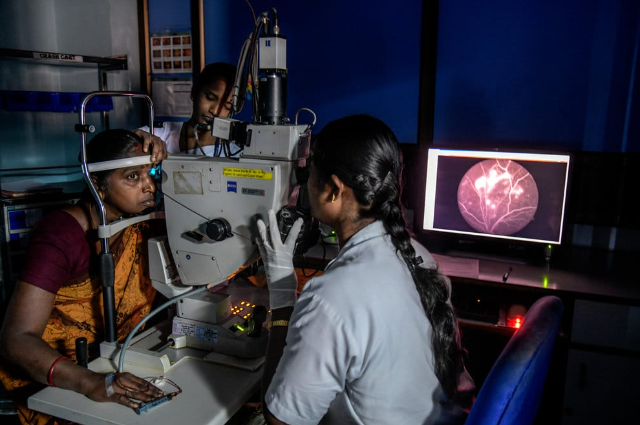
Google has developed an Artificial intelligence model that can detect diabetic retinopathy by analyzing the scans of the retina. Diabetes is the seventh leading cause of death in the world. Diabetic retinopathy is a kind of nerve damage in the eyes due to diabetes and if it's not detected early, can lead to blindness. In India diagnosis and treatment are often mismatched. Every year 5.2 million errors are happening in India. Diagnosis with the help of AI has the potential to change this. Google's AI program is now used at Arvind eye hospital in Madurai, Tamil Nadu- where it helps eases the burden on both physicians and improve the patient experience.
Microsoft – Apollo Hospitals’ partnership:
Cardiovascular diseases are the biggest cause of mortality in India among the group of 29 to 60 years. As a part of Microsoft’s AI Network for Healthcare initiative, Microsoft India in partnership with Apollo Hospitals launched the first-ever AI-powered CVD Risk Score API (application program interface). It helps in predicting the risk of cardiovascular diseases 5 to 7 years in advance. It is specially designed for Indian patients by considering their lifestyle parameters like diet, physical activity, smoking, stress, etc. To date, 200,000 people have already been screened using this AI tool. “AI is going to help us in not only identifying the vulnerable patients early but also in terms of modifying the intensity of treatment after classifying them into high risk or very high-risk group” (Dr. (Prof) N N Khanna, Senior Consultant - Interventional Cardiology and Vascular Interventions, Indraprastha Apollo Hospitals) (Mabiyan 2018).

